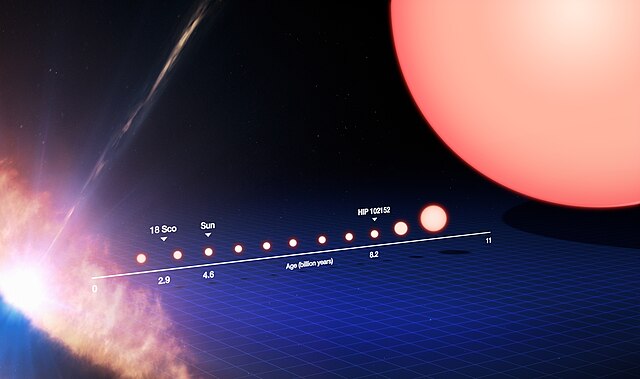Top Qs
Timeline
Chat
Perspective
HD 197027
Star in the constellation Capricornus From Wikipedia, the free encyclopedia
Remove ads
HD 197027 (HIP 102152) is a star in the constellation Capricornus. It has an apparent magnitude of 9.15,[3] making it readily visible through a telescope but not to the naked eye. The object is located at a distance of 255 light years but is approaching the Solar System with a heliocentric radial velocity of −44 km/s.[6]

HD 197027 has a stellar classification of G3 V, indicating that it is an ordinary G-type main-sequence star like the Sun. It has only 97% the mass of the Sun[7] but 108% of its radius.[8] It shines at 119% the luminosity of the Sun[1] from its photosphere at an effective temperature of 5,718 K,[9] similar to the Sun's 5,778 K. HD 197027's metallicity – elements heavier than helium – is similar to the Sun.[9] At an older age of 6.92 billion years, it spins with a projected rotational velocity of about 2 km/s.[9]
Since its measured properties of this star are very similar to those of the Sun, it has been considered a candidate older solar twin.[11] The abundances of 21 elements overall are more similar to the Sun than any other known solar twin. [citation needed] Its Iron Abundance is −0.03 with an error value of 0.02 Fe/H. (The value comes from the Hipparcos Extended Catalog.)[12]
Remove ads
References
External links
Wikiwand - on
Seamless Wikipedia browsing. On steroids.
Remove ads

